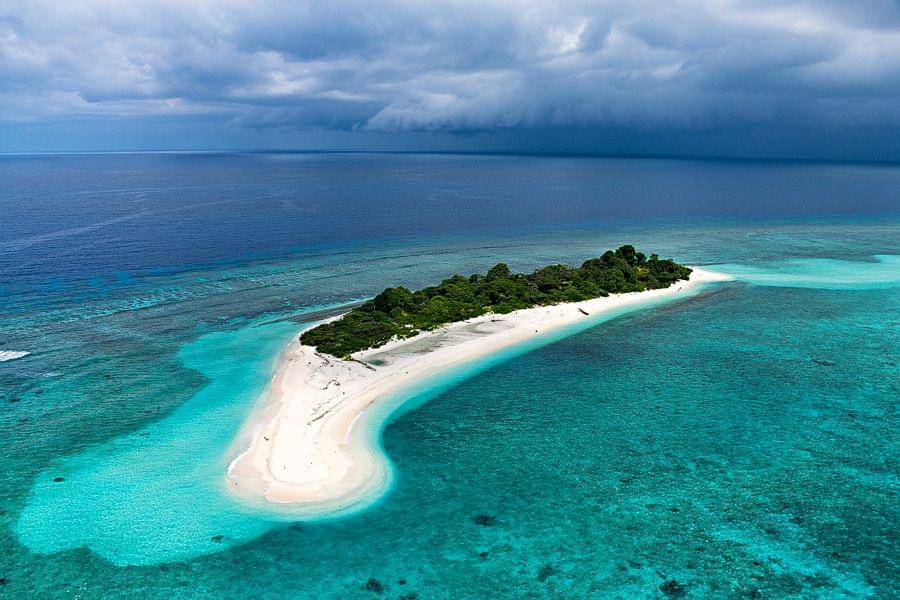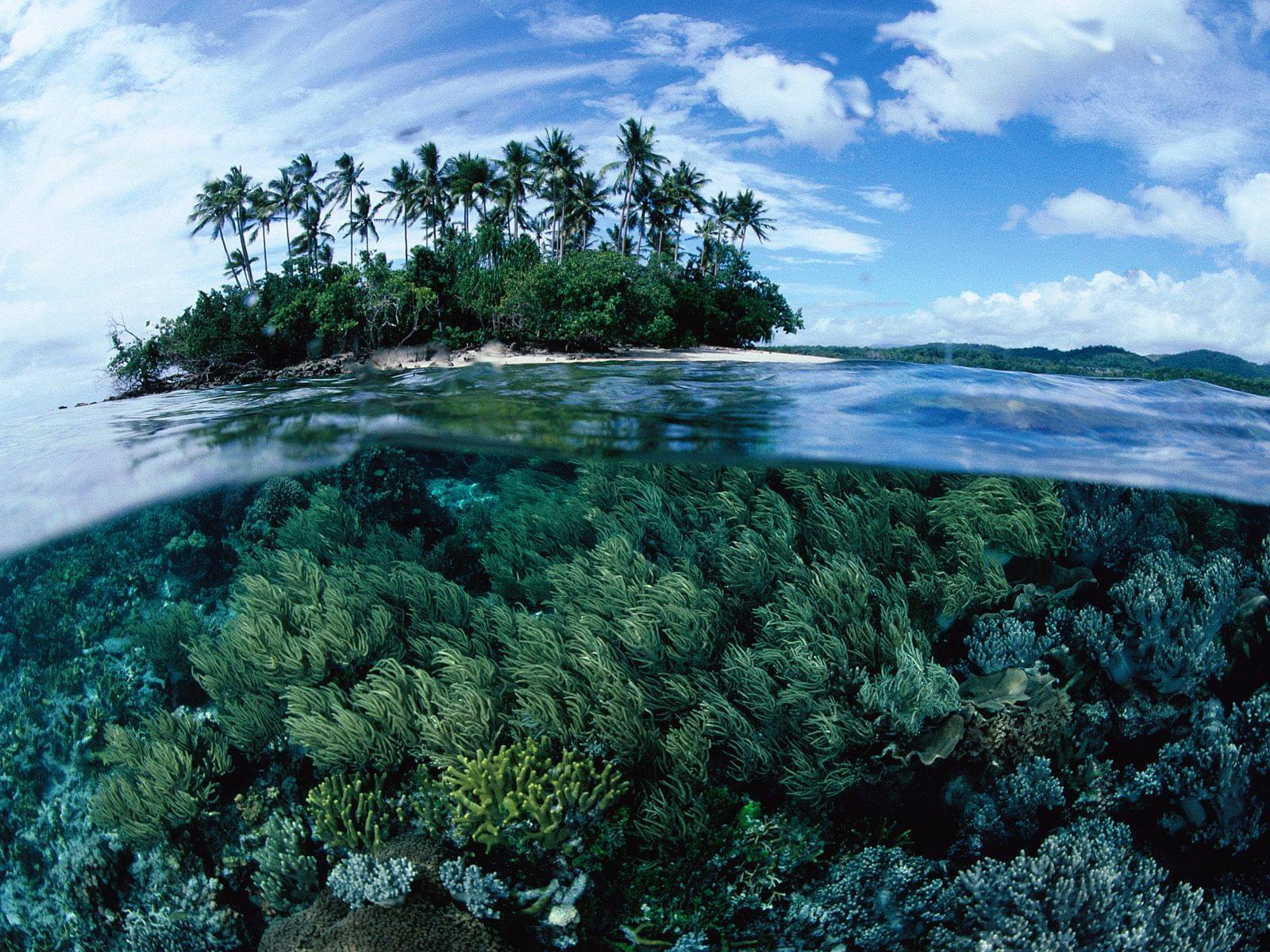
New Guinea, is an island located in the Eastern Malay Archipelago, in the western Pacific Ocean, northern Australia. It is bordered by the Pacific Ocean in the north, Bismarck and the Sea of Solomon to the east, the Coral Sea and the Torres Strait to the south, and the Sea of Avora to the southwest. New Guinea is administratively divided into two parts: which consists of the western half of the Indonesian region; and it consists of the eastern half of the greater part of Papua New Guinea, which has been an independent country since 1975.
Information on New Guinea
New Guinea is the second largest island in the world (after Greenland), New Guinea extends about 1500 miles (2,400 km) in length (from northwest to southeast) and about 400 miles (650 km) in width (from north to south). The area of the island area is 317150 square miles (821400 square km).
New Guinea comes from a continuum of mountains with high peaks of 13,000 feet (4000 meters) in height, stretching across New Guinea from northwest to southeast, rising to 16,024 feet (4,884 meters) in Gaia, and reaching a peak in west Papua (the highest point in Indonesia). There are ice caps that extend in a chain, with mountains that include dormant and elongated volcanoes, as well as fertile highland basins of over 4,900 feet (1,490 meters). In the northern part of the mountain range there is a deep structural moat, which comes between the valleys of the Mamberamo, Sibic, Romo, and Markham rivers. Facing the plains from the north-central coast of New Guinea, it is a mountain range under 11,500 feet (3,505 meters). Most of them are from the lowlands of the Bombay Peninsula and the Dubray Peninsula and are among the most mountainous regions that make up the extreme northwestern part of the island.
South of the central mountain range: the Digul region, which is characterized by the vast moorland plain that is crossed by many rivers including Bayan, Digul, MAPI, Pulau, and Lorentz. To the southeast of Stanley Range Owen, which stretches about 200 miles (320 km), forms the vast peninsula, which separates the Solomon Sea to the north of the Coral Sea and to the south.

the climate
The origin of New Guinea’s climate is due to a tropical climate, with maximum average temperatures ranging from 86 ° C to 90 ° F (30 and 32 ° C) in the lowlands. Daytime temperatures in highlands, usually exceed 72 ° F (22 ° C) throughout the year. In the southeast, the trade winds blow for seven months each year, with precipitation on the slopes facing the south from the central highlands, exceeding 300 inches (7,620 mm) annually. The central highlands receive rain throughout the year, totaling between 100 and 160 inches (2540 and 4065 mm).
New Guinea consists of a rich and varied group of plant life, which contains orchids, figs, and beech species, and mangrove swamps are found along the coast almost everywhere. There he succeeded with indoor mangroves with Nipa palm trees. Large terraces of palm trees such as palm trees are found along the delta and southern coast rivers. New Guinea contains the low primary rainforest, which covers much of New Guinea’s land, reaching approximately 3,300 feet (1,000 meters) above sea level. The central highlands rise above 3,300 feet, standing in oak, beech, and common pine, and include many wildlife and reptiles such as the kangaroo tree and phalanger. Notable birds are kasori, stunning birds of paradise, and parrots.

Language and religion
Roughly, New Guinea residents come to the Papua speakers, and there are the original settlers from the island, most of whom lived in the interior and south sections. The ethnic composition of New Guinea is a complex one among Papua residents, who speak 700 different languages. On the north coast, and the east coast, there are many islands in the sea with different communities of Astronesian (Melanesia) speakers. There are also some other languages such as: Polynesian, Chinese, and Europeans. The inhabitants of New Guinea also speak Indonesian (the official language of Indonesia) and English (the official language in Papua New Guinea). Although about two-thirds of the population of Papua New Guinea are Christian followers, they still practice traditional religious beliefs and rituals on a large scale.
In most parts of the highlands, many natural plants have been removed due to the relatively dense cultivation of the highlands. The central highlands are the most densely populated part of the island.
Economy
The economy of New Guinea is dependent on the island’s copper, gold and mineral resources. It is one of the largest copper concentrations in the world in Tembagapura, which extends about 25 miles (40 km) southwest of Mount Jaya in Papua. Large quantities of gold are also produced in Oak Teddy. Petroleum is produced in the Dubrai Peninsula region of Papua and near the Kotobo Lake in the central highlands of Papua New Guinea. Natural gas has been discovered in the Kikori region in Papua New Guinea.
The bulk of the population of New Guinea is subsistence farmers. Potatoes, taro, sago, and bananas are the staple food in New Guinea, as well as sweet potatoes as the staple food in the highlands. Pig breeding is widespread. Cash crops in Papua New Guinea include coffee, cocoa, coconut, palm oil, tea and rubber. Tuna, shrimp, and timber are also exported. Inland transportation consists of a few secondary coastal roads, Riverboats, and airlines, the latter becoming increasingly important.
